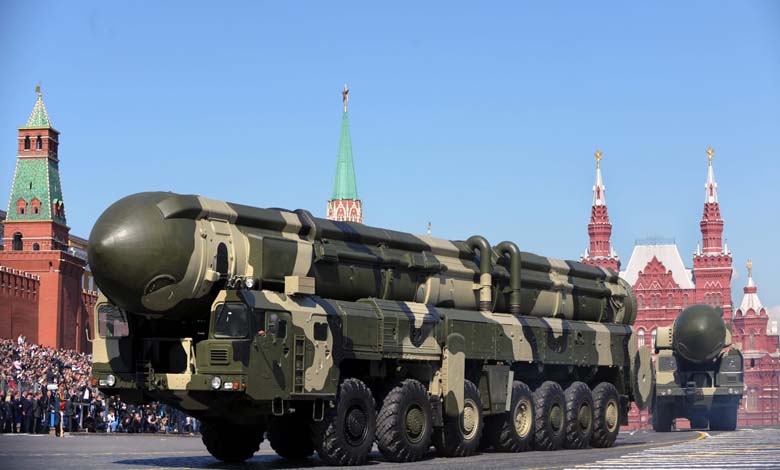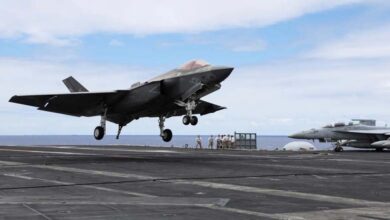Nuclear War Message: The Soviet Dead Hand Confronts America’s Doomsday Missile

At the height of the Cold War, American military leaders were not only concerned with the capability to launch nuclear weapons but, more importantly, with how to ensure the transmission of launch orders under the worst possible conditions.
-
Russia Launches Largest Air Attack on Ukraine Since 2022
-
Russia Warns Against Using Tactical Nuclear Weapons to Strike Iran’s Fordo Facility
This critical need led to the development of one of the most secretive and unusual communication systems of the era: the AN/DRC-8 Emergency Rocket Communications System (ERCS).
The ERCS was designed as a last-resort mechanism to transmit nuclear launch orders when all other communication channels had failed, ensuring that the U.S. could still retaliate even after a devastating Soviet first strike.
-
Russia Responds to Spider Web Operation: Nine Ukrainian Regions Under Fire
-
Quantity and Precision: Missile Superiority Gives Russia the Edge Over Ukraine
Who Sends the Orders?
Under U.S. nuclear doctrine, only the President of the United States has the authority to authorize the use of nuclear weapons.
Once the decision is made, the order is relayed through the National Military Command Center (NMCC) as an Emergency Action Message (EAM) to operational units. Upon receipt and authentication, the order is executed without delay or reversal.
-
Broadcasting the Apocalypse Signal: Mysterious Messages Hint at a Russian Superweapon
-
Weapon Tests Precede Russian Official’s Visit… Kim’s Messages to Allies and Enemies
The primary challenge, however, was not executing the command, but ensuring it could be delivered under any circumstances. To address this, Cold War-era planners developed multi-layered communication systems, including backup methods for the backups.
The American solution was particularly unique: a missile would be launched specifically to transmit a high-frequency radio signal containing the President’s message to any receiving platforms within line of sight—on land or in the air.
Once activated, the system could not be aborted, guaranteeing that a retaliatory message would reach its targets regardless of enemy action.
-
A Message and a New Tactic… Kursk, Russia, Redefines War and Truce
-
Russia Recaptures 64% of Kursk Territory: Is Ukrainian Control Coming to an End?
Origins and Capabilities
The concept emerged in 1961 as tensions escalated between Washington and Moscow. The first successful test occurred in May 1962 at Vandenberg Air Force Base, California.
Despite the success, concerns were raised about the vulnerability of mobile missiles. As a result, the ERCS was installed on Minuteman II intercontinental ballistic missiles (ICBMs) located in fortified underground silos.
By late 1967, the Minuteman-based ERCS became fully operational, with six missiles on constant alert at Whiteman Air Force Base in Missouri.
-
The “Orechnik” Surprise: The Russian “Terrifying” Missile Pulses with a Western Heart
-
Russia Accuses the U.S. and the U.K. of Recruiting Agents to Target Its Bases in Syria
The payload weighed approximately 875 pounds and measured about eight feet in length. Messages were pre-recorded on magnetic tape and broadcast via omni-directional antennas after separation from the missile.
By the mid-1980s, 12 ERCS-equipped missiles had been deployed, with 8 to 10 kept in a continuous state of readiness.
However, following the end of the Cold War, President George H. W. Bush ordered the system retired in 1991 as part of a broader policy to reduce nuclear alert levels.
-
“Osama Bin Zelensky”: A New Russian Nickname for the Ukrainian President
-
Intercontinental Missile Warfare: Russia Launches a Ballistic Missile at Ukraine
The Soviet “Dead Hand”
In response, the Soviet Union developed a similar system known as “Perimeter”, more commonly referred to in the West as “Dead Hand”.
Although detailed information remains scarce, the system was designed to ensure an automatic nuclear response even if the Soviet leadership were wiped out.
Despite widespread speculation, it was not fully autonomous. Like the ERCS, the Dead Hand required initial human activation and then delivered launch orders using missile-based payloads to relay commands to strategic forces across the USSR.












